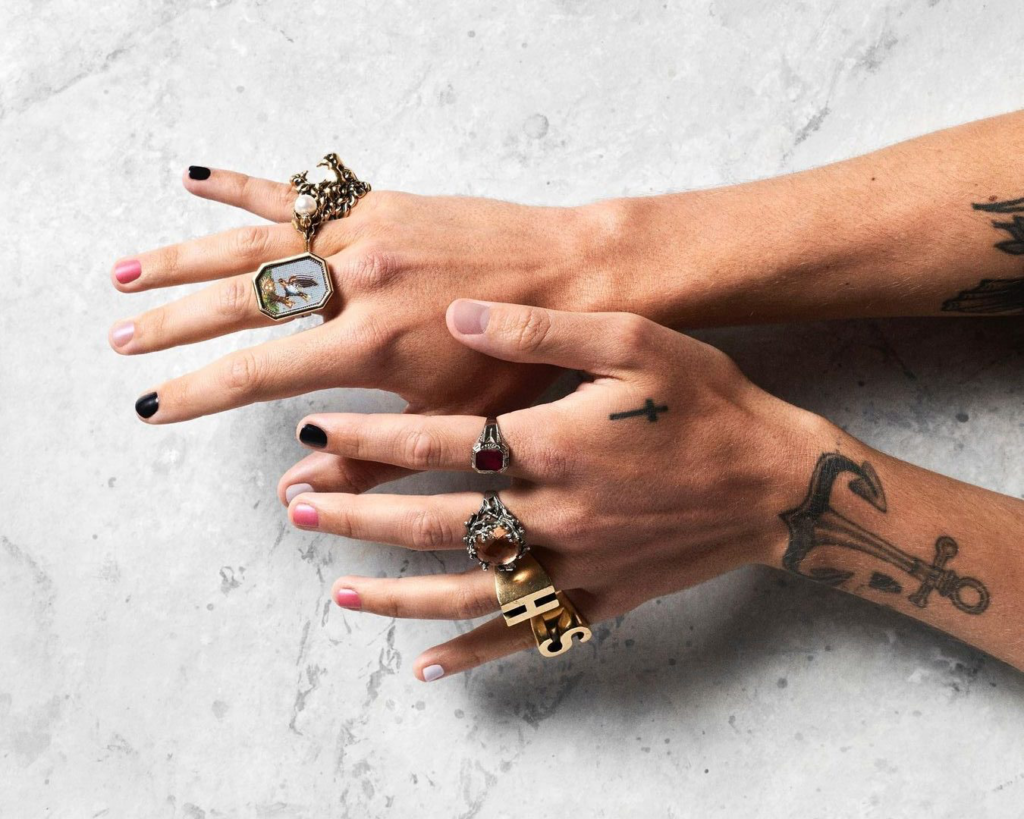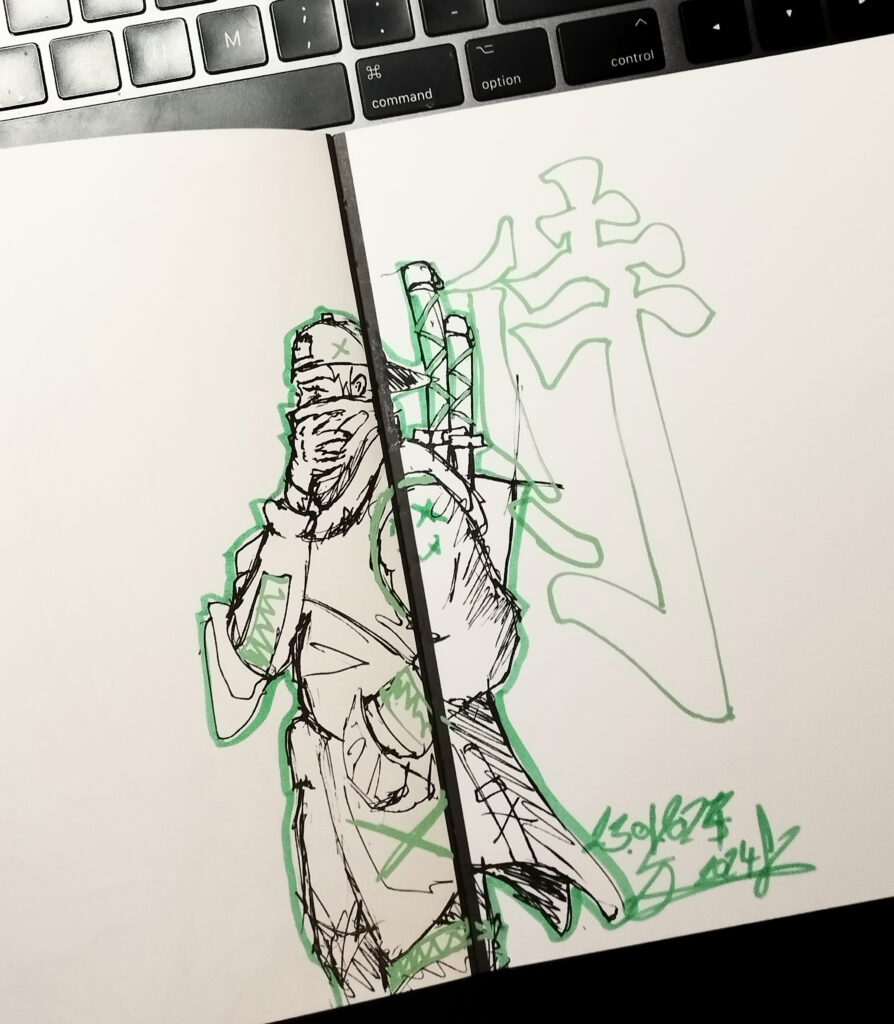
Um die Generation Z anzusprechen, war die Social-Media-Marketingstrategie der Marke Pleasing, welche 2021 von dem Sänger Harry Styles gegründet wurde, entscheidend. Der Instagram-Account von Pleasing wurde still und leise mit drei schwarz-weißen Posts und einem Bio-Text „Find your pleasing“ gelaunched. Der Account gewann schnell mehr als 410.000 Follower. Durchgesickerte Bilder deuten darauf hin, dass die Marke Nagellack, ein Serum und einen kühlenden Stift für die Augenpartie anbieten wird. Inzwischen wurden die Produktkategorien auf Bekleidung, sowie Parfums ausgeweitet. Der Instagram-Account der Marke wurde genutzt, um die bevorstehenden Produkteinführungen anzuteasern und mit den Fans zu interagieren, wodurch eine Atmosphäre der Vorfreude und Exklusivität geschaffen wurde. Pleasing hatte auch Einfluss auf TikTok. Die geschlechtsneutralen Beautyprodukte der Marke waren ausverkauft, nachdem die Vorbestellungen begonnen hatten.
Die geschlechtsneutralen und „cleanen“ Beautyprodukte von Pleasing, sowie ihr inklusiver und authentischer Marketingansatz kommen bei der Generation Z gut an. Die Betonung von Offenheit und Transparenz der Marke entspricht den Werten der Zielgruppe. Die Nutzung von Social-Media-Plattformen wie Instagram und TikTok, auf denen die Generation Z sehr aktiv ist, hat es Pleasing ermöglicht, effektiv mit ihrer Zielgruppe in Kontakt zu treten und sie einzubinden. Die Marketingstrategie von Pleasing auf Instagram war erfolgreich. Der visuell konsistente Feed ist ästhetisch ansprechend und zieht die Aufmerksamkeit der Zielgruppe auf sich. Die Marke profitierte auch von hohen Engagementraten auf Instagram, indem sie Reels, Giveaways und Influencer-Marketing einsetzte, um ihre Reichweite und ihr Engagement zu steigern. Auch auf TikTok nutzte Pleasing den Algorithmus, welcher Inhalte basierend auf der Interaktion der Nutzer empfiehlt, sowie den Fokus auf Authentizität und Kreativität legt. Die Marke nutzte TikTok, um ihr Publikum durch Tutorials und trendbasierte Videos auf sich aufmerksam zu machen. Wichtig ist hier außerdem der Fokus auf die verschiedenen Arten Content zu produzieren. Während auf Instagram ästhetisch ansprechende Fotos und Reels gepostet wurden, nutzte die Marke Tiktok für teilweise schräge, jedoch den aktuellen Trends folgende Kurzvideos, in welchen immer wieder Diskussionen und Spekulationen in den Kommentaren aufkamen, wer wohl hinter diesen Videos steckt. In Frage kamen hier vor allem Harry Styles Schwester Gemma Styles, der Musiker selbst, sowie andere Personen in seinem näheren Umfeld. Gezeigt hat sich die Person hinter dem Account jedoch noch nie. So wird also Community Engagement gefördert, sowie eine persönliche Verbindung von Kund:in zur Marke geschaffen.
Die Beliebtheit von Pleasing bei der Generation Z kann auch auf das Streben nach Nachhaltigkeit und Ethik zurückgeführt werden, die für diese Zielgruppe wichtige Werte darstellen. Die Betonung von Inklusivität und Geschlechtsneutralität in der Marketingansprache der Marke steht im Einklang mit den Werten der Generation Z, die Vielfalt und Repräsentation in den Vordergrund stellt.
Zusammenfassend lässt sich sagen, dass die Social-Media-Marketingstrategie von Pleasing die Generation Z erfolgreich angesprochen hat, indem sie sich auf Authentizität, Inklusivität und Nachhaltigkeit konzentrierte und visuell konsistente und ansprechende Inhalte auf Instagram und TikTok verwendete, welche unterschiedlich genug waren, jedoch immer den Werten der Marke entsprachen. Die Produkte der Marke sowie ihr inklusiver und authentischer Marketingansatz haben zu ihrer Beliebtheit der Generation Z beigetragen.
https://www.instagram.com/pleasing/
Beispiele TikTok
https://vm.tiktok.com/ZGerDCxGT/
https://vm.tiktok.com/ZGerDTny2/
https://vm.tiktok.com/ZGerUevob/
https://vm.tiktok.com/ZGerDtXN9/
Beispiele Instagram
https://www.instagram.com/reel/C142E3LrBrE/?igsh=MTVhdzNkajg3d2prbw==
https://www.instagram.com/reel/C0ZLASGOO7u/?igsh=NWVhZHltNjV5M3gy
https://www.instagram.com/reel/C12F_CLLDiD/?igsh=d3g5cTJyOTIxbjBm
https://www.instagram.com/reel/C2Ky_8Ir-MQ/?igsh=c2kzZzFpNzNyNWZq
Weitere Quellen









